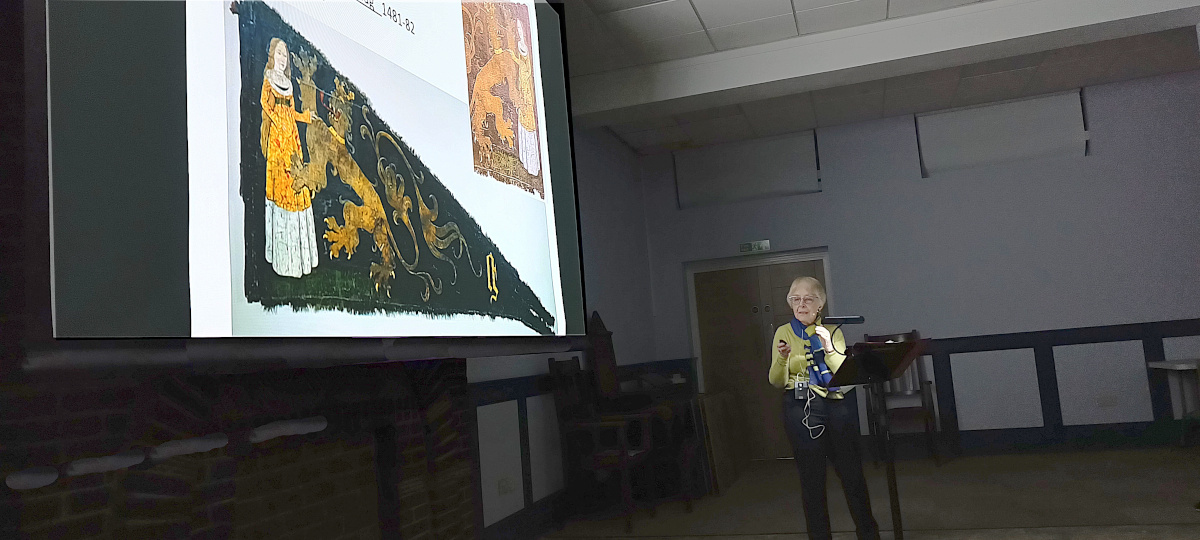Our course on Female Artists before 1800 with Jennifer continued on Friday 01 November 2024.
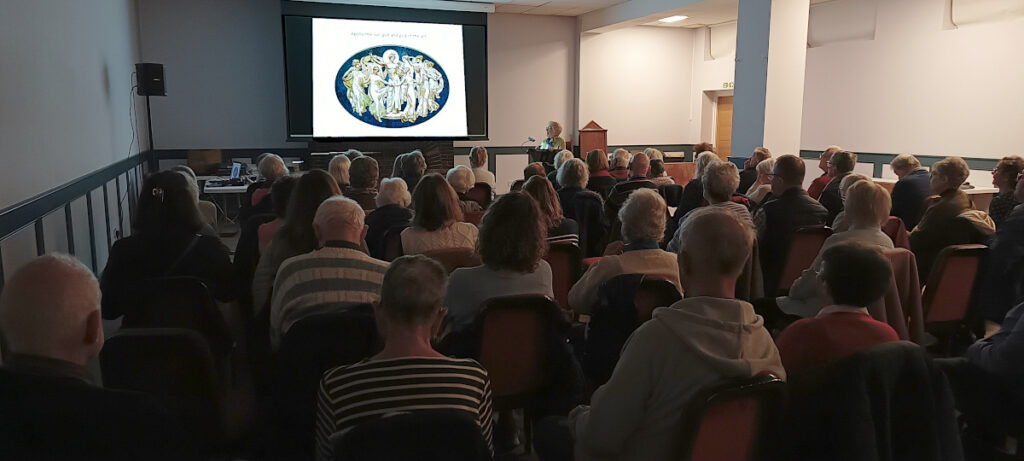
After a quick recap of the previous session, Jennifer launched into the movement of artists from Europe into the United Kingdom, sometimes at the request of the monarch and sometimes speculatively in the hopes of finding a profitable position at court. Many of these artists came from Flanders or from the Netherlands, and brought their wives and children who, in many cases, were also talented artists in their own right. Names included Lucas Herenbout and Hans Holbein. Both had been involved in the development of Miniatures as shown below:
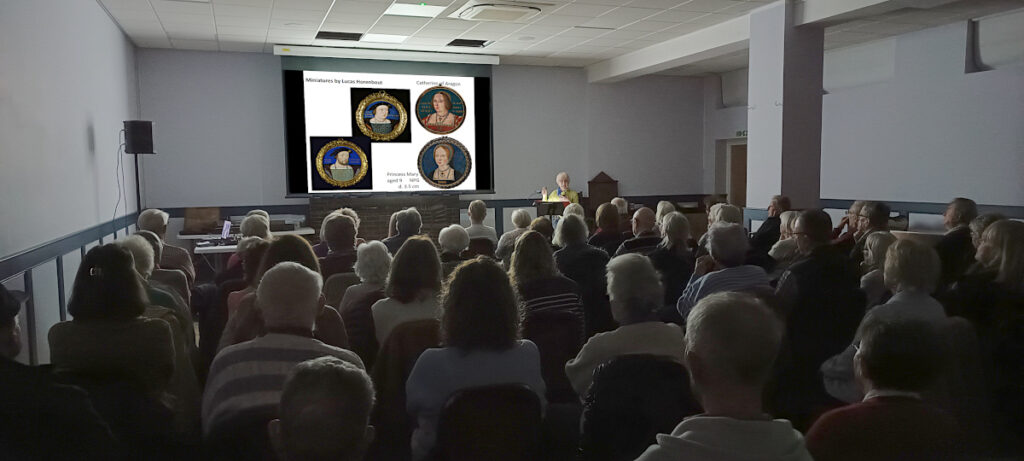
We were told the story of how Hans Holbein, accompanied by his wife Susannah who spoke German, had been sent to Cleves to make a painting of Ann before her marriage to Henry VIII, and of some of the antics that occurred on that trip, including the wardrobe allowance claimed by Susannah for the trip!
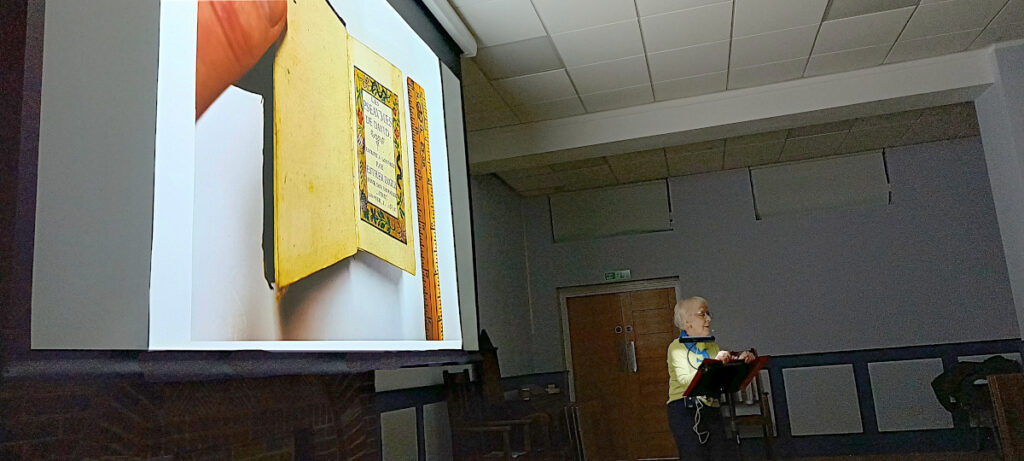
Female artists excelled at the production of miniatures and illuminated texts, and some examples were shown like this one by Esther Inglis, who was living in Edinburgh at the time. Women were certainly active artists at that time, but often were not known as such other than by the names of their husbands. Even when Lucas Herenbout had died, money was still being paid to his name for artworks completed ‘by his studio’ after his death. Jennifer thought that these works were often by the wives, who as talented artists continued working after their husband’s death.
This year marks the 400th anniversary of the death of Esther Inglis, and there is an on-line exhibition of some of her works being hosted at the moment. We were shown a letter she had written to King James I where her hand writing was indistinguishable from modern printing!
Joan Carlisle also featured in the lecture, being the first female artists to be on show in the Tate Britain gallery. There was a wide range of portraits, many illustrating what we learned is called the “van Dyck Tuck”, and we started to recognise the same dress appearing in portrait after portrait. Jennifer thought that this was a ‘prop’ that added to the belief that Joan Carlisle clearly had her own studio. There were many portraits of the Murray Family by her, including one that used to hang in 10 Downing Street!
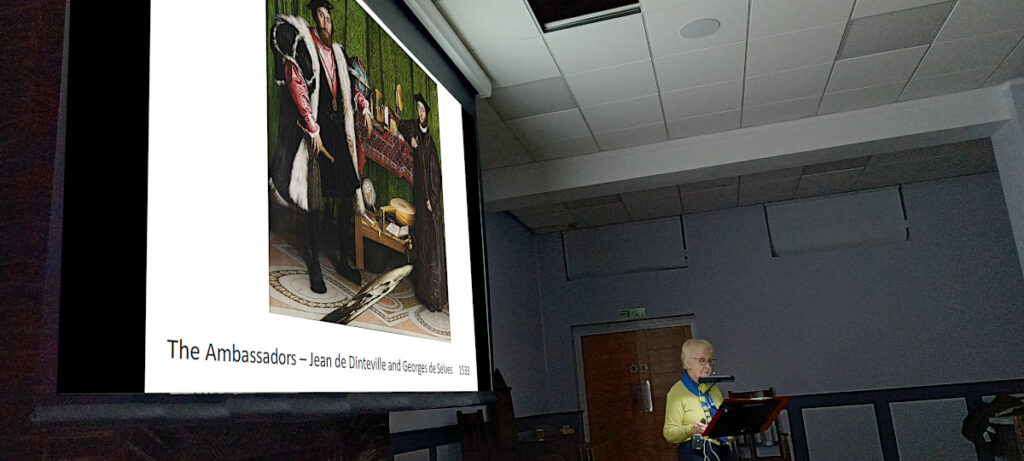
We then moved onto a painting in the National Gallery. Having learned so much about the Holbein family, it was naturally Holbein’s painting of The Ambassadors. The painting has many intriguing details, and was commissioned by the Ambassador on the left – Jean de Dinterville, the ambassador from France at the time of the separation from Rome.
The course will continue on 15 November 2024 and 29 November 2024.

